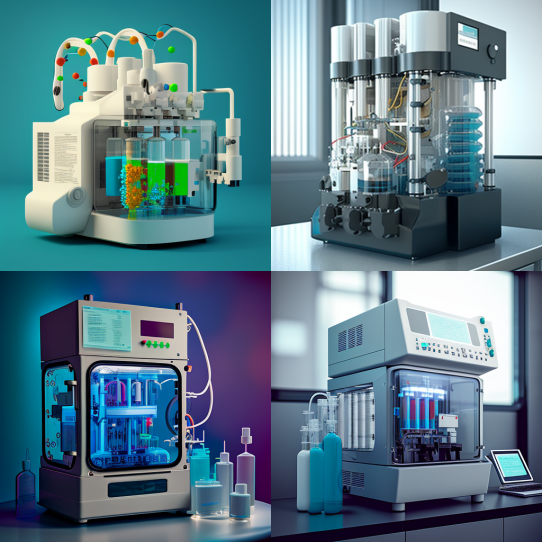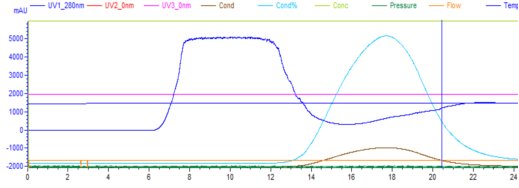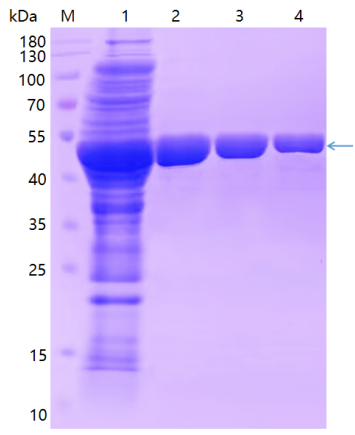2023-06-05 Hits(570)
The isolation and purification of protein is widely used in biochemical research and application, and it is an important operation technology. A typical eukaryotic cell can contain thousands of different protein. In order to study a certain protein, we must first purify the protein from other protein and non-protein molecules.
KMD Bioscience can provide labeled/unlabeled recombinant proteins for purification, and can also be used for purification and isolation of natural proteins from tissue fluid, saliva, intestinal fluid, animal or human serum, and even some animal tissues.
According to the characteristics of proteins, there are generally five purification methods, such as affinity chromatography, ion exchange, molecular sieve, hydrophobic chromatography and HPLC. Advanced AKTA purification system and various pre-packed purification columns are used to purify recombinant proteins or natural proteins from different sources.

According to the physical and chemical properties of the target protein that customers need to purify, molecular sieve with appropriate pore size is selected for isolation and purification, and then appropriate anion and cation adsorption columns and HLPC are selected according to the PH value of the sample buffer, and the corresponding elution peaks are identified and collected.
Firstly, the macromolecular impurities were removed by molecular sieve multi-level isolation and filtration, then the small molecular compounds were purified by macroporous resin or reverse resin, and the small molecular proteins were further identified by HPLC and MS.
Depending on the characteristics of the target protein to be isolated, we develop a protocol for the isolation and purification of the product, which is confirmed by mass spectrometry, activity identification and other schemes.
The general procedure of natural protein isolation and purification can be divided into three steps: pretreatment, coarse isolation and fine isolation.
To isolate and purify a protein, firstly, protein should be released from the original tissues or cells in a dissolved state and kept in its original natural state without losing its biological activity. Therefore, animal materials should first remove connective tissue and adipose tissue, and then choose appropriate methods to crush tissues and cells according to different situations; Because plant tissues and cells have cell walls composed of cellulose, hemicellulose and pectin, it is generally necessary to grind quartz sand or glass powder with appropriate extraction solution or treat them with cellulase.
When protein extract (sometimes mixed with nucleic acid, polysaccharide, etc.) is obtained, salting-out, isoelectric point precipitation and organic solvent fractionation are generally used. These methods are characterized by simplicity and large capacity, which can not only remove a large number of impurities, but also concentrate protein solutions.
Generally, after crude isolation, the protein is small in size, and most of the impurity proteins have been removed. Hydrophobic chromatography, ion exchange chromatography, molecular sieve isolation and affinity chromatography were used for further fine isolation.
Firstly, the protein was detected by SDS-PAGE, and then the ion exchange chromatography scheme was worked out by exploring the conditions (buffer, packing, elution conditions, salt gradient and so on).
(1)After centrifugal filtration, the bacterial liquid was eluted with Akta purifier and G25 desalting column to achieve the purpose of purification.


(2)The desalted sample of G25 was isolated by SPFF (agarose gel) chromatographic column, and the sample was centrifuged and passed through the membrane, and then purified by the steps of balance, loading and elution.

.png)
After the small-scale conditions of protein purification are explored, a large number of purification can be carried out according to the small-scale conditions, and the concentration can be detected by SDS-PAGE, ultraviolet absorption and BCA method.
KMD Bioscience can deliver finished protein, purification report and picture data for you.